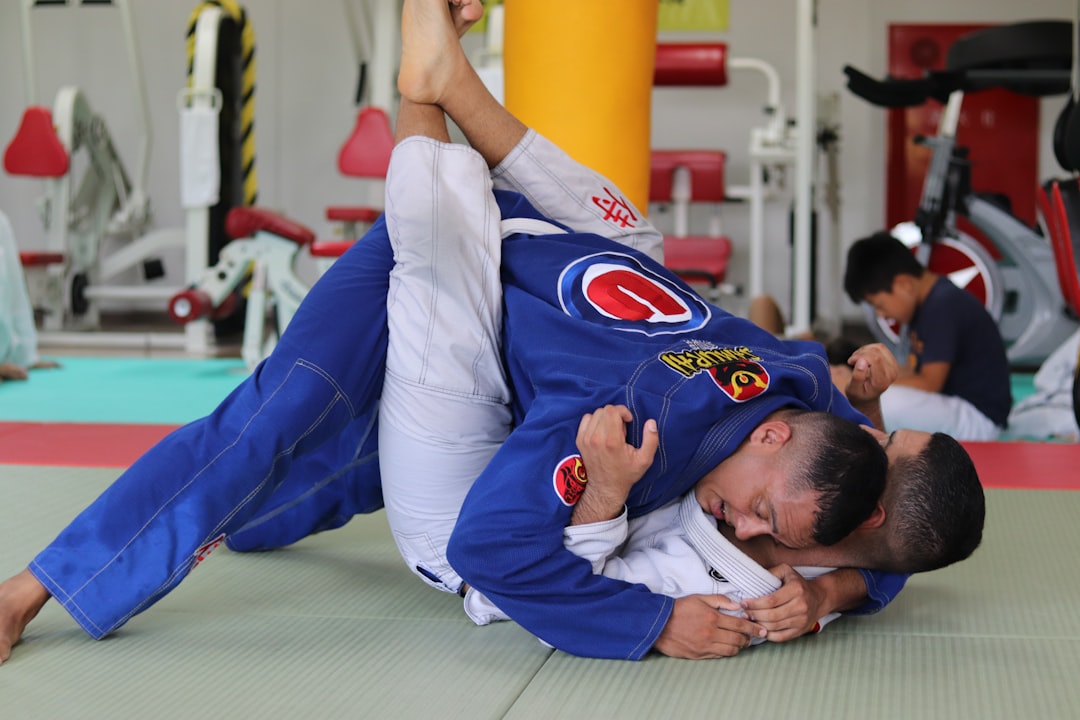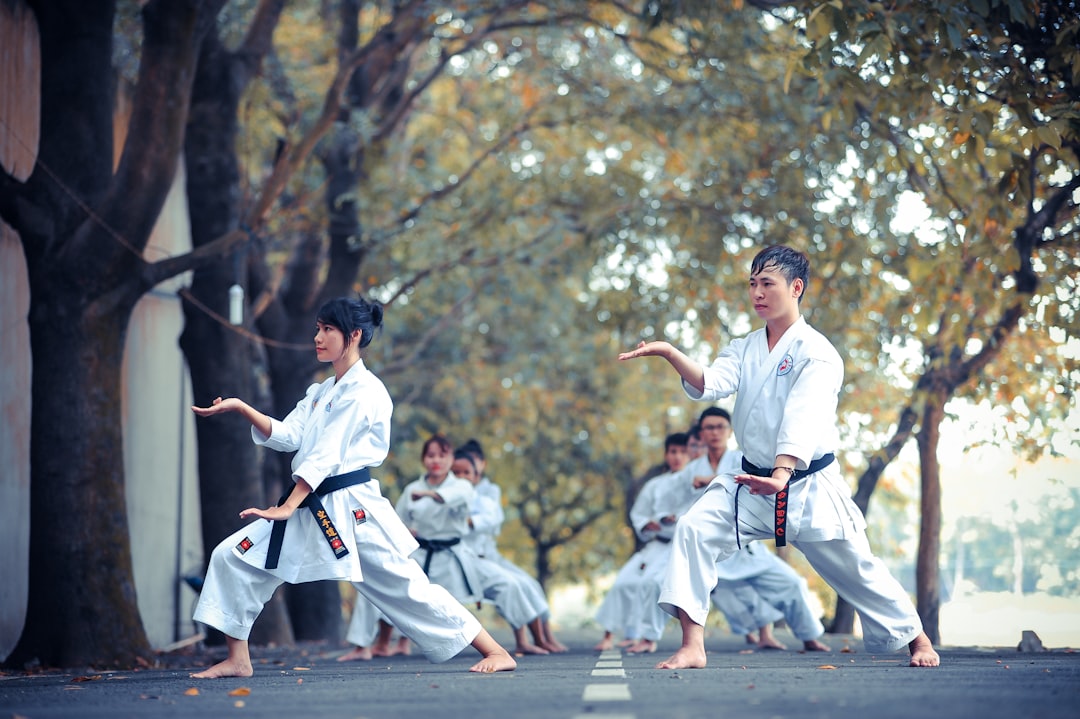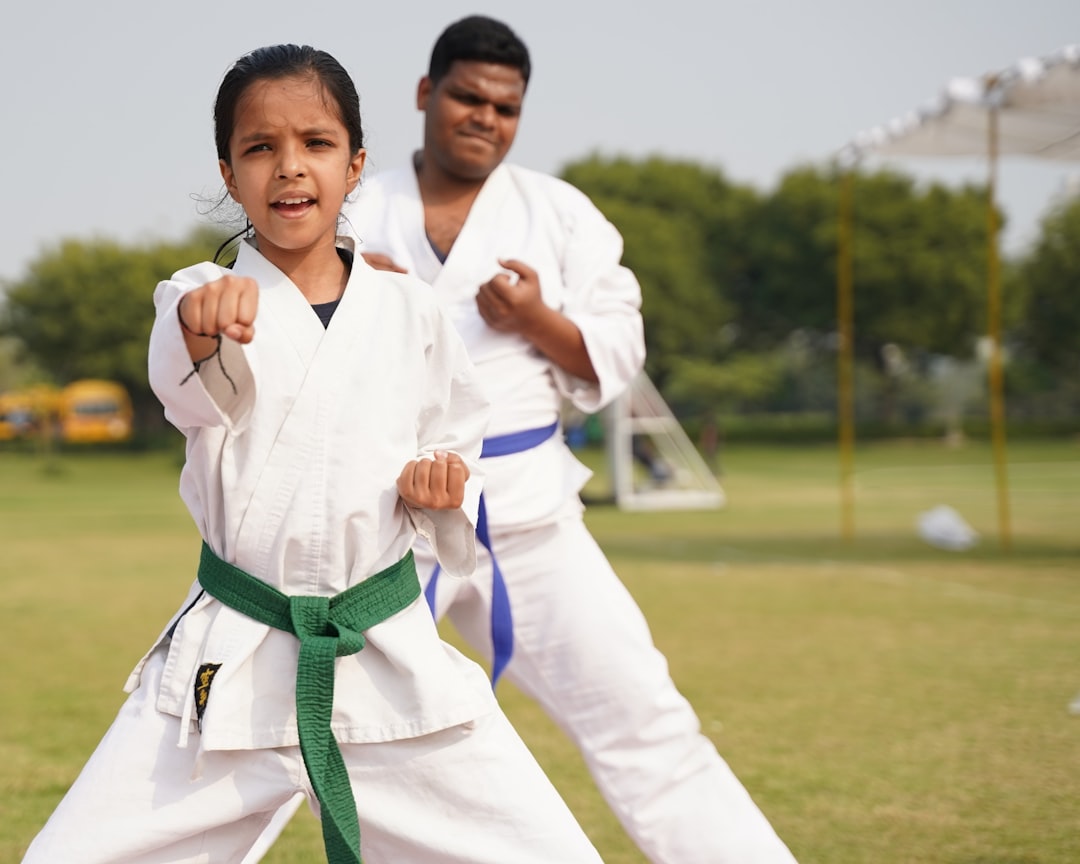The traditional karate outfit, known as a gi or keikogi, has its roots in the feudal era of Japan and remains emblematic of respect, discipline, and tradition within martial arts today. While maintaining its cultural significance through materials like cotton or hemp canvas, the modern gi has undergone enhancements to offer improved flexibility, breathability, and protection for practitioners, particularly in sparring. These advancements ensure that the gi supports a wide range of karate techniques without compromising on the traditional essence. The evolution of the gi includes adaptations like stretchable fabric and padding for safety, and while some may debate the necessity of these changes, they are embraced as a complement to tradition, ensuring both comfort and functionality for contemporary martial artists. The gi's design—including its Obi belt tied in a square knot, reinforced stress points, collar, and straight-leg Shuko trousers with an elasticized waistband—honors the art's heritage while facilitating effective training. When choosing a karate outfit, it is crucial to consider factors such as fit, material, and adherence to the specific requirements of one's karate style or organization, as well as the belt color that reflects the wearer's rank. Proper maintenance keeps the gi in pristine condition, demonstrating respect for instructors, peers, and the discipline itself.
Martial arts practitioners around the globe don attire that not only signifies their discipline but also pays homage to rich cultural traditions. Among these, the karate outfit, known as a keikogi or more commonly, a gi, stands out for its significance and evolution within the martial arts spectrum. This article delves into the multifaceted world of martial arts uniforms, with a particular focus on the karate gi. We will explore their origins, how they have adapted over time, and what distinguishes an authentic karate outfit from others. Whether you’re a beginner or seasoned practitioner, understanding the practical considerations for selecting your karate attire ensures both respect for tradition and readiness for performance.
- The Significance of Traditional and Modern Martial Arts Uniforms
- Exploring the Origins and Evolution of Karate Outfits
- Key Characteristics Defining a Genuine Karate Gi
- Practical Considerations for Selecting Your Karate Outfit
The Significance of Traditional and Modern Martial Arts Uniforms

Martial arts uniforms, also known as “keikogi” in judo and “dogi” in karate, serve as more than mere attire for practitioners; they are a symbol of respect, discipline, and the martial arts tradition. These garments are designed to facilitate movement, allowing for unobstructed practice and learning. The traditional uniform typically consists of a jacket and pants made of cotton or a blend that provides durability and comfort during training sessions. It is often white, symbolizing purity and humility, two key virtues in martial arts philosophy. In recent years, however, the evolution of martial arts has led to the development of modern uniforms that cater to various needs such as flexibility, breathability, and protection. These enhancements do not detract from the traditional essence but rather adapt to modern training environments and individual preferences. For instance, some karate outfits may incorporate more stretchable materials or additional padding in certain areas for added safety during sparring. These modifications ensure that practitioners can maintain the integrity of their martial art’s techniques while benefiting from the advancements in fabric technology and design innovation. Is the traditional dogi becoming less common, or are modern adaptations simply an addition to the choices available to martial artists today? The answer lies in the balance between honoring tradition and embracing innovation, a concept deeply ingrained in the martial arts philosophy itself. Modern uniforms maintain the core principles of the traditional garb while offering enhanced functionality and comfort for contemporary practitioners.
Exploring the Origins and Evolution of Karate Outfits

Martial arts enthusiasts and practitioners often don the traditional karate outfit called a “gi” or “keikogi” when engaging in their discipline. The origins of this garment date back to the feudal era in Japan, where it was adapted from the kimono for practicality in movement during martial arts practice. Over time, the gi has undergone subtle modifications to suit different styles and federations within karate, adapting elements such as jacket length and belt color systems. The gi serves not only as a uniform but also as a symbol of respect for the traditions and discipline that karate embodies.
The evolution of the karate outfit is a reflection of both tradition and practicality. Does the traditional gi restrict mobility, or has it been designed to facilitate the full range of movement required in karate techniques? While the basic design remains consistent with its origins, certain aspects have been modified to improve functionality for athletes competing at the highest levels. For instance, the thickness and texture of the fabric may vary, and the fit can be adjusted to accommodate different body types while still maintaining the traditional appearance. These changes underscore the ongoing adaptation of the karate outfit to meet both competitive and cultural demands.
Key Characteristics Defining a Genuine Karate Gi

When exploring the authentic Karate Gi, one must understand its key characteristics that distinguish it from other martial arts uniforms. A genuine Karate Gi is traditionally made of cotton or hemp canvas, which offers durability and comfort during rigorous training sessions. It features a simple yet functional design, with a belt known as an Obi securing the waist, typically tied in a square knot to signify the student’s rank. The jacket, known as the Uwagi, is designed to allow for a full range of motion, ensuring that the practitioner’ Gi does not hinder their techniques. It should have reinforced stress points and a collar, which not only maintains the traditional look but also protects the neck during throws and strikes. The trousers, or Shuko, are straight-legged with an elasticized waistband for ease of movement. Are the materials heavy and durable? Does the Gi have reinforced stress points and a proper collar? These aspects are crucial in determining whether a Karate Gi is authentic and functional for serious practitioners. The answer is yes, for a traditional and genuine Karate Gi, one should look for these specific features that honor the discipline’s rich heritage and facilitate effective training.
Practical Considerations for Selecting Your Karate Outfit

When selecting a karate outfit, often referred to as a gi, there are several practical considerations to ensure that your attire is both functional and respectful to the discipline. The gi should fit comfortably, allowing for full range of motion necessary to perform kata and execute various techniques effectively. Are the pants hemmed correctly? Do they stay in place during active movements? It’s essential to choose a pair with an appropriate length and secure fit; traditionally, the pants are folded over once and hemmed to just above the ankle. Similarly, the jacket should be of the right size and length; it typically extends to about mid-thigh for adults. Is the jacket’s collar stiff enough to support proper bowing? The material and construction of the gi must adhere to the standards set by your karate style or organization, as different schools may have specific requirements for their students’ attire. Additionally, the color and style of the gi can signify rank and affiliation; beginners often start with a plain white gi, while higher ranks might wear black or other colored gis indicating their advancement. Ensuring that your karate outfit is well-maintained and presentable is a mark of respect for both your instructors and fellow practitioners. Regularly washing and properly folding the gi will keep it in good condition and ready for use during practice.
Martial arts uniforms, often referred to as ‘karate outfits’ in the context of karate, serve as more than mere attire; they symbolize respect for tradition and readiness for practice. This article has delved into the significance of these garments, from their origins in feudal Japan to their evolution and modern applications. The traditional karate outfit, known as a ‘gi,’ bears distinctive characteristics that set it apart as an authentic piece within the martial arts realm. Practitioners must consider factors such as material, fit, and functionality when selecting their own gi. Ultimately, whether for training or competition, understanding the role and features of a karate outfit called is essential for any martial artist seeking to honor the discipline’s rich heritage and embrace its practical aspects.
